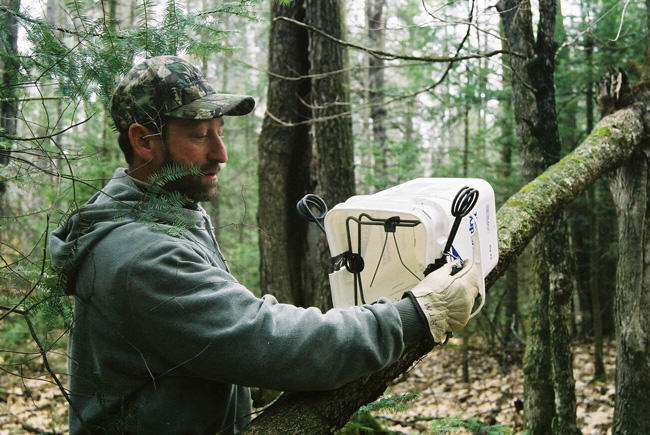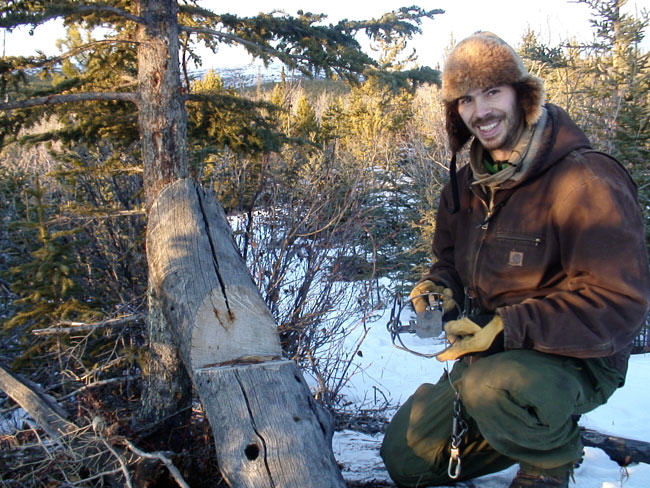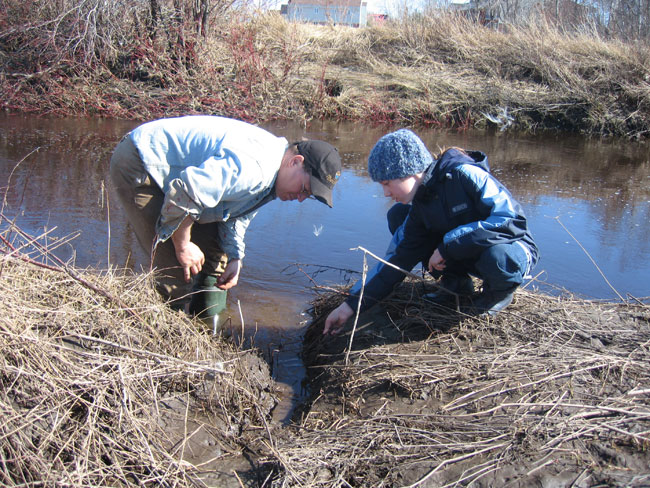
A recent on-line, anti-trapping rant by Born Free USA boss Adam Roberts (“What kind of person still traps wild animals?”, Huffington Post, Sept. 7, 2016) underscores how trappers are on the front line in the war against humans using animals – a war in which the weapons of choice are misleading images, inflammatory rhetoric, and exploiting the information gap between rural and urban cultures.
Roberts’ attack drives home how important it is to explain, again and again, the vital role trappers play in responsible wildlife management and conservation.
Like other “animal-rights” groups, the folks at Born Free rage against a wide range of animal-use activities. This time, as part of their “Victims of Vanity 2” campaign, they are promoting an “undercover” trap-line video showing “atrocities” that they claim “occur regularly across America”.
“What kind of person purposely destroys a beaver dam and sets a ‘wall of death’ of Conibear traps,” asks Roberts, “knowing that the unsuspecting beavers will return to repair their handiwork – only to be possibly smashed across their abdomens and drowned?”
The insinuation is that such traps cause terrible suffering. Born Free‘s own video, however, shows beavers that have clearly been struck by the trap bar across the back of the neck, breaking cervical vertebrae and causing rapid death, just as this quick-killing trap is intended to do. These traps were developed through several decades of (on-going) scientific research to provide the most humane possible methods for controlling wildlife populations.
North America’s world-leading humane-trap research program has provided the scientific basis for comprehensive state and provincial trapping regulations, trapper-training programs, ISO standards, Best Management Practices, and the Agreement on International Humane Trapping Standards.
SEE ALSO: Neil Jotham: A life dedicated to humane trapping
Thanks to this pioneering work, the time-to-death produced by quick-killing traps like those shown in Born Free‘s video is now measured in seconds. Roberts knows, however, that most of his readers live in cities and have little real contact with nature. People who find their meat neatly wrapped in cellophane on grocery store counters are easily shocked by pictures of dead animals, no matter how humanely they were euthanized – especially when cued with sufficiently emotional rhetoric.

Similarly, the live-holding devices used for capturing larger predators – like the coyote shown in Born Free‘s video – are not diabolical instruments of “torture”. Modern, live-holding foot traps are used by wildlife biologists to capture and release – unharmed – wolves, lynx, river otters and other animals for radio-collaring or reintroduction into regions where they were previously extirpated. To claim, as Roberts does, that such traps “have remained relatively unchanged for 400 years” is nonsense.
Should We Kill At All?
But what about the bigger question Roberts implicitly raises: should we really be killing wild animals at all?
In fact, there are many reasons why wildlife populations often must be managed. Overpopulated beavers can completely “eat out” vegetation in their region; the population will then crash and there may be no beavers at all for many years. Regulated trapping can smooth out these boom-and-bust cycles, maintaining healthier and more stable beaver populations. This is one reason why biologists believe there are now as many beavers in North America as there have ever been. There can, however, be too much of a good thing: beaver dams in the wrong places can flood roads, fields, and forest habitat. When your basement (driveway, back yard) is flooded, who’re ya gonna call: Mr. Roberts … or your local trappers’ association?
Meanwhile, coyotes are the number-one predator problem for sheep and cattle ranchers, and many states and provinces have been obliged to offer bounties to keep their populations in check. Coyote, fox and raccoon populations are also culled to protect endangered ground-nesting birds or sea-turtle eggs. Overpopulated foxes, skunks and raccoons are prime vectors for rabies and other diseases that can be transmitted to humans and pets. For these and many other reasons, there will always be a need for trapping, whether or not anyone buys fur. Without a market for fur, however, these management efforts would be paid for by the government – i.e., by tax-payers – as they now are in many parts of Europe.
SEE ALSO: Why fur is the ethical clothing choice
Trappers protect nature in other ways that are not often publicly recognized. While we all “care” about nature, most of us now live in cities. Trappers are our eyes and ears on the land, sounding the alarm when nature is threatened by inappropriate resource extraction or industrial activity. Trappers’ associations across North America are on the front lines to ensure that forestry practices respect the needs of wildlife, for example by leaving a swath of uncut trees along watercourses. And, like the canary in the mine, trappers are the first to spot changes such as reduced reproduction rates among mink that may signal industrial pollution upstream. Harvesting data, including the sex and age distribution trends, provide vital information about the health of our wildlife populations.

Most important of all, nature is not a museum. Most wildlife species produce more young each year than their habitat can support to maturity. The ones that don’t survive feed those that do. We are part of nature and we too can make use of the surpluses that nature produces – year after year, generation after generation – so long as we protect the habitats and ecosystems that provide those surpluses. This is called “the sustainable use of renewable natural resources”, a central conservation principle promoted by the International Union for Conservation of Nature (IUCN) and other conservation authorities. (By contrast, the synthetic materials that animal activists would have us wear are usually derived from petroleum, a non-renewable resource.)
Animal Abuse
Does all this give us the right to abuse animals? Absolutely not.
The Born Free video also shows a trapped coyote being kicked, prompting Roberts to ask, “What kind of person watches a tethered and helpless coyote writhe in pain and distress, unable to move because of the intensely unforgiving steel jaws clamped to her paw, kicks her in the side, and then finally shoots her in the chest so that her lungs fill with blood, and she dies a miserable, suffocating death?”
Most trappers would be disgusted by this scene. There is no excuse for kicking an animal, ever. Furthermore – Roberts’ “intensely unforgiving” rhetoric aside – every trappers’ association and trapper-training manual teaches that live-trapped animals should be killed quickly and humanely with a direct shot to the head. But this completely unacceptable behavior of one individual does not give Roberts or Born Free the right to smear the reputations of more than 200,000 North American trappers.
On the contrary, as society becomes more interested in protecting our natural environment, it is time that we learn more about these remarkable and knowledgeable men and women – the small minority among us who continue to live close to the land.
What kind of person still traps today? Far from the grotesque caricatures that animal activists like to portray, in many real and practical ways, today’s trappers are the true guardians of nature.











Born Free is so adamant with no trapping or killing of any animals! They should set an example for all of us. A good way to do that would be to ban themselves from any meat, leather or other products derived from animals. When they have done that, the next step should be that it is a no no to kill any plant and they can do the same thing there. Soon, they will all die off and the problem is solved.
An these groups should only be allowed 1 lawsuit we have no protection its not right that they lose then refile another lawsuit again again again should be illegal to do you can’t try some twice on the same crime so how’s this the anti’s can
This anti’s don’t want to hear the truth it’s simple proven fact trapping is not as they claim we need more trappers association’s to get flyers with these facts an bring them to schools libary’s news interviews posted on bill boards an for us trapper’s to not be ashamed to tell people you trap or afraid to we need to speak up every chance we get “1 of my trapping buddies I see in Wal-Mart I start talking about trapping an he freaks likes its a secret or we should be shy or quite “I can’t I won’t even my lawn customers I tell every 1 proudly an I’ve got looks from few an I explain to them starting with its not like you think an explain it to them an the rules an dispell what they heard wrongly I hadn’t lost 1 customer over it an lot said thanks for explaing an others who don’t like it but not against it its just not for them an its fine “an we should sue for lose’s after every failed lawsuit an for harassment emotional distress an ex thanks from a proud trapper outdoorsman’